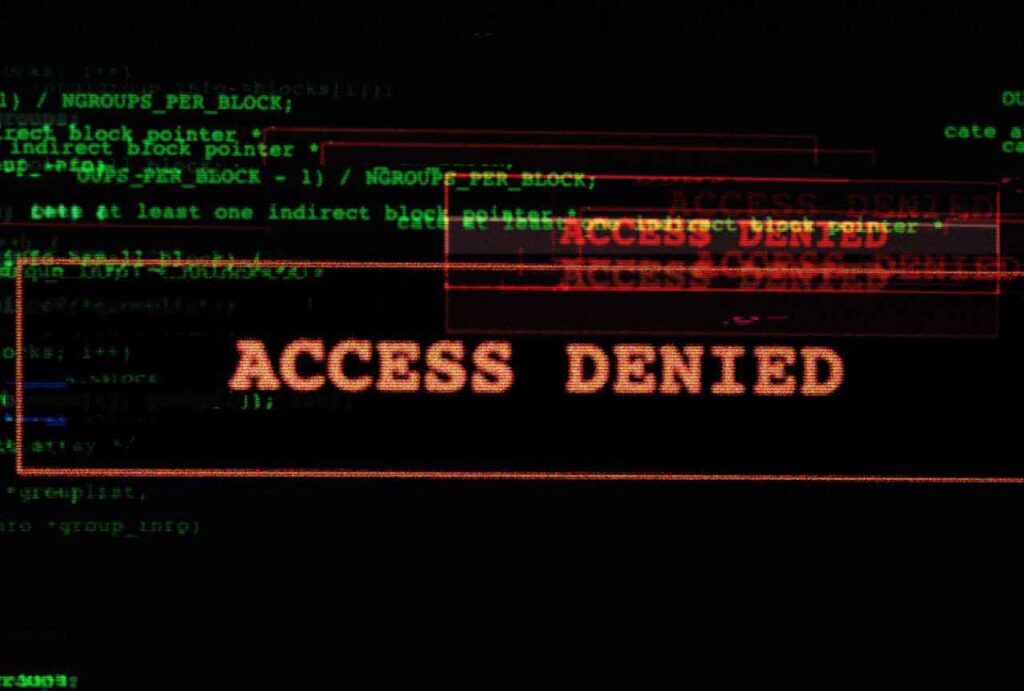In the first five months of 2025, U.S. employers announced over 696,000 job cuts, marking an alarming 80% increase compared to the same period in 2024, according to recent reports. This sharp rise highlights the growing unpredictability in the job market, leaving many employees blindsided by layoffs or terminations.
Recognizing the warning signs ahead of time is not just about avoiding surprises, it’s about taking control of your career and preparing for what’s next. This article highlights overlooked but reliable signs that could indicate your job is at risk, empowering you with the insights needed to act before it’s too late.
I. Understanding the Need for Awareness
Awareness of the early signs of job instability is essential. Being fired or laid off often comes with limited notice, leaving employees unprepared to navigate the challenges that follow. Recognizing subtle workplace indicators can help you take control of your situation before decisions are finalized.
1. Proactive Preparation
Noticing early signs allows you to start preparing for potential changes. This includes updating your resume, expanding your professional network, and exploring new opportunities while still employed. These actions place you in a stronger position to transition smoothly if termination occurs.
2. Emotional Readiness
The shock of sudden job loss can be overwhelming. Spotting warning signs early helps you mentally prepare for the possibility, reducing stress and enabling you to approach the situation with clarity and composure.
3. Career Strategy
Understanding your position within the company helps you make informed decisions about your career. Awareness empowers you to address potential concerns with your manager, seek opportunities for growth elsewhere, or shift your focus to industries with greater stability.
4. Financial Security
Layoffs or terminations without warning can lead to immediate financial strain. By identifying risks early, you can take steps to bolster your savings, reduce unnecessary expenses, and plan for potential income gaps.
By being vigilant and recognizing these signs, you gain the ability to navigate uncertainty with confidence and take proactive measures to protect your professional and personal well-being.
II. Subtle but Real Signs You’re About to Be Fired or Laid Off
1. Communication Goes Cold
A noticeable decline in communication with your manager or colleagues is often one of the first signs of trouble. If your once-regular meetings with your manager are canceled without explanation or responses to your emails and messages become delayed or nonexistent, it could indicate a shift in priorities. This lack of engagement often signals a reduced interest in your input or role within the organization.
Open communication is essential for alignment and collaboration. When this breaks down, it can leave you out of critical conversations and hinder your ability to stay informed. Identifying this change early allows you to address the issue directly by seeking feedback or clarifications about your role.

Also Read: How To Overcome the Fear of Getting Fired From Work
2. Exclusion from Projects
Being removed from important projects or excluded from new assignments can be a strong indicator that your position is at risk. If you find yourself sidelined or no longer involved in decision-making processes that were previously part of your responsibilities, it’s a sign that your contributions may no longer align with the company’s goals or plans.
This exclusion often suggests that leadership is reallocating resources, either preparing for structural changes or ensuring critical tasks are completed by others. Paying attention to these shifts can help you identify whether your role is being phased out or replaced.
3. Leadership Avoids Eye Contact or Interaction
A noticeable change in how leadership interacts with you can be a subtle yet significant sign. If your manager or senior leaders begin avoiding direct conversations, fail to acknowledge your contributions, or appear uncomfortable during interactions, it could reflect a larger issue.
This behavior often stems from internal decisions already being made regarding your role. Leaders may find it difficult to maintain open communication when discussions about terminations are underway. Recognizing this behavior early provides an opportunity to seek clarification or feedback about your performance and position within the team.
4. Unusual Increase in Documentation Requests
If you notice a sudden and unexplained rise in the frequency or detail of documentation requested for your tasks, it could indicate that your work is under increased scrutiny. Managers or HR teams often begin documenting performance issues before initiating termination processes, especially in companies with strict policies around firing employees.
Requests for detailed progress reports, task breakdowns, or performance evaluations, particularly when such oversight was not common before, may suggest that the organization is building a case or transitioning your responsibilities to others. This can serve as an early sign to review your performance, address any gaps, and ensure you’re meeting expectations.
5. Coworkers Seem to Know More Than You Do
If your colleagues appear to have knowledge about changes within the company or your team that you’re unaware of, it could be a sign that decisions about your role are being discussed behind closed doors. This may manifest as coworkers offering unsolicited sympathy, avoiding discussions about specific topics, or displaying unusual behavior around you.
These subtle social cues should not be overlooked. Staying attuned to workplace dynamics and initiating transparent conversations with trusted colleagues or supervisors can help you understand the broader context. Avoid letting speculation take control and instead focus on gathering factual insights.
6. Budget Cuts or Reallocation
Sudden changes in departmental budgets or project funding can have a direct impact on your job security. If key initiatives are canceled, budgets for your projects are slashed, or expenses related to your role are reduced, it may indicate broader financial concerns within the organization.
Budget reallocation often prioritizes roles and departments deemed critical to immediate goals, potentially putting others at risk. Paying attention to these shifts and understanding how they affect your position can help you assess the likelihood of termination. Preparing for potential changes by identifying transferable skills and exploring other opportunities ensures you are not caught off guard.
7. Access to Tools or Systems is Revoked
A sudden restriction of access to tools or systems you previously used can be a strong indicator of an impending termination or layoff. Whether it’s a reduced ability to view internal reports, removal from shared drives, or limitations on essential software, these changes often point to preparations for your exit.
Such restrictions may arise as part of a security protocol to minimize risks associated with departing employees. If you notice this, it’s crucial to seek clarification from IT or your manager while maintaining professionalism. This can also signal a good time to secure any non-proprietary work examples or personal contact lists to ensure you’re ready for the next step in your career.

Also Read: 15 Jobs at High Risk of AI (Is Yours On The list?)
8. Performance Goals Suddenly Shift
When your performance expectations are abruptly altered or new, unrealistic metrics are introduced, it may indicate an effort to justify termination based on unmet objectives. These shifts often involve unclear or unattainable benchmarks, leaving you in a position where meeting expectations becomes increasingly challenging.
Addressing this proactively is key. Requesting clarity on these new goals and seeking actionable feedback on how to achieve them demonstrates professionalism and may provide insight into the company’s intentions regarding your role. If your concerns are ignored, it might be time to consider exploring external opportunities.
9. Decline in Workload or Responsibilities
A noticeable reduction in your workload or the reassignment of key responsibilities to others can indicate that your role is being deprioritized. When critical tasks you’ve historically handled are given to other team members, or when you find yourself without significant projects to work on, it often signals a shift in how leadership perceives your value to the team.
This decline can occur for various reasons, including departmental restructuring or an intentional effort to phase out your position. Addressing this proactively by seeking clarity about your role and requesting additional responsibilities can help demonstrate your commitment to contributing effectively.
10. Increased Focus on Cross-Training Others
If you observe your responsibilities being documented and shared with colleagues, it could signal that your role is being phased out. Cross-training ensures continuity when an employee departs, and a sudden emphasis on this process might indicate that the organization is preparing for your exit.
While cross-training is often framed as a team-strengthening measure, you should consider whether it aligns with other warning signs. If this pattern emerges, use the opportunity to demonstrate your value by excelling in your contributions and showing your adaptability in taking on additional responsibilities.
III. Differentiating Between General Concerns and Real Warning Signs
It’s common to feel anxious about job security, but not every concern signals an impending termination. Distinguishing between general workplace fluctuations and genuine warning signs is essential for maintaining perspective and making informed decisions.
1. Understand the Nature of Workplace Changes
Workplace adjustments—such as shifting priorities, new project assignments, or departmental restructuring—don’t always indicate risk to your role. Companies regularly adapt to changing business needs, and these changes may have no impact on your job security.
Focus on patterns rather than isolated incidents. A single canceled meeting or project reassignment doesn’t necessarily signal danger, but consistent exclusion or major reductions in responsibility often do.
2. Evaluate the Context of Changes
Consider the broader context of any changes you observe. For example:
- Are company-wide layoffs being announced, or are changes specific to your team?
- Is the organization undergoing financial difficulties or strategic realignments?
- Are there clear, documented reasons for performance reviews or workload adjustments?
Understanding these factors can help you identify whether concerns are related to individual performance or broader organizational challenges.
3. Seek Direct Feedback
When in doubt, address your concerns directly with your manager. A proactive approach to seeking feedback on your performance and role can provide clarity and reduce speculation.
- Ask about your alignment with current goals and whether there are areas for improvement.
- Request updates on any changes that could impact your position.
Open communication shows initiative and may even help to reinforce your value within the organization.
4. Monitor Consistency Across Signs
Real warning signs often come in clusters rather than isolated instances. For instance:
- A decrease in communication paired with exclusion from key projects.
- Unexplained reductions in workload alongside increased documentation scrutiny.
Isolated concerns are more likely to be routine, but a combination of multiple signs warrants closer attention and action.
5. Avoid Overreacting to Workplace Rumors
Office rumors can escalate anxieties but are not always grounded in reality. Instead of relying on speculation, prioritize factual information. Engage in discussions with trusted colleagues or supervisors to confirm any potential risks.
Recognizing the signs of potential job loss early is a critical step in safeguarding your career and future. By staying alert to changes in communication, responsibilities, and workplace dynamics, you can take proactive measures to prepare for any outcome. Whether it’s updating your professional profile, building your network, or addressing concerns with your manager, acting decisively can minimize uncertainty and position you for success. Stay informed, adaptable, and ready to take control of your professional journey.



